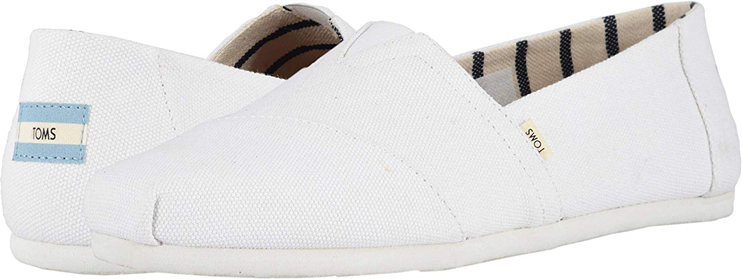On Reimagining The Company’s Mission
TOMS Shoes started based on a One-for-One concept: buy one pair of shoes and the company donates another pair to a child in need. After several very successful years growing the business, the founder, Blake Mycoskie, decided to take a sabbatical to analyze the TOMS Strategy. He reflects on what he learned below.

CRITICAL FACTORS
The Founder of Toms™
hbr.org/2016/01/the-founder-of-toms-on-reimagining-the-companys-mission
In September 2012, my wife Heather and I got married. At that point, I’d brought in an experienced team of executives to manage the day-to-day operations, and for the first time since founding the business, I felt I could take a break from it. Heather and I decided to move to Austin, TX for an extended honeymoon sabbatical. I was relieved to be getting away, but also found that feeling deeply unsettling: The excitement and camaraderie of our start-up was beginning to be replaced by a more hierarchical, corporate culture. The leadership team was bogged down in personality conflicts and bickering, with key members insisting that we implement processes and systems similar to those used at their previous companies. As an organization, we were so focused on protecting what we’d already built that no one was thinking about new possibilities. I noticed that longtime employees were starting to leave for more entrepreneurial organizations, and I realized that, secretly, I wanted to follow them.
Once on sabbatical, I dedicated a lot of time to private contemplation. I also started talking to anyone I thought might offer good advice and inspire me. I spoke regularly with my executive coach, entrepreneur friends, and business and nonprofit leaders I admire. I traveled to conferences around the country to learn from experts in social enterprise and international development.
The more I thought about it, the more I realized that TOMS had veered away from its “why.” In the early days we always led with our story: We weren’t selling shoes; we were selling the promise that each purchase would directly and tangibly benefit a child who needed shoes. But our desire to sustain the company’s hypergrowth had pushed us away from that mission and into competing on the “what” and “how,” just as every other, shoe company does.
Another breakthrough came when I was introduced to a man named Joe Ford, who told me that his son, Scott, was also using business to improve lives, but through the coffee trade in Rwanda. After meeting Scott, I realized that a TOMS coffee venture could have a real impact—and maybe lift me out of the funk I was in.
I told our senior executives about my idea. Like TOMS Shoes, TOMS Roasting would have a one-for-one model: For every bag of coffee we sold, we would provide a week’s worth of water to a person in need. When they gave me the green light, I quickly assembled a small team of TOMS employees to get the project (code-named “Burlap”) off the ground.
I soon found myself back at work full-time. Despite some hiccups, by the end of 2013 we had launched the coffee busines nationally in Whole Foods stores, opened up three of our own cafés, and started exploring international expansion. To date we have provided more than 175,000 weeks of clean drinking water to people in need around the world. The new product generated a ton of PR and got our customers excited about TOMS again. But most important, I believe, it gave our employees permission to think bigger, to challenge the status quo, and to reconnect with the mission of the business.
It also got me thinking bigger. I realized that my ultimate aim was to create the most influential, inspirational company in the world, which would be possible only with more help. The person we found, Jim Alling, embodies the core values of TOMS. Although he scratched his head a bit over the “coffee decision” (he spent much of his career in senior roles at Starbucks), he understood what the move represented. Creating TOMS Roasting wasn’t an attempt to compete with big chains but, rather, a bold move to re-engage with the community and help more people. Over the past year Jim has brought great stability and strategic thinking to the business. We now also sell bags, to fund safe births for mothers and babies in need, and backpacks, to support anti-bullying programs.
As TOMS approaches its 10th anniversary, I feel more energized and committed than ever. As far as we’ve come, I still see tremendous opportunities to grow our movement. The “why” of TOMS—using business to improve lives—is bigger than myself, the shoes we sell, or any future products we might launch. It took going on a sabbatical to realize the power of what we’ve created—and the best way for me to move it forward. Now that I have a clear purpose and amazing partners supporting me, I’m ready for the company’s next 10 years and the many adventures ahead.
“The road to progress is always under construction.”
HANK THOMAS